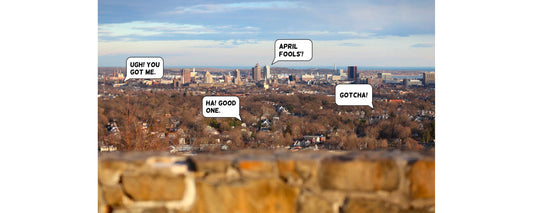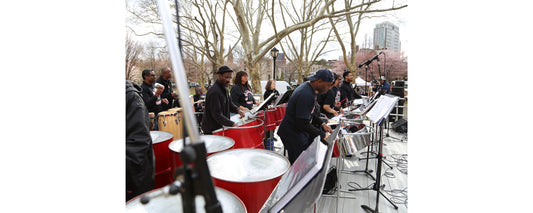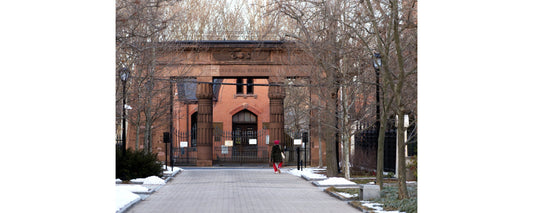People have been moving houses—literally moving them–for hundreds of years, which may seem foundationally silly in today’s world.
But sometimes it’s the smartest move, and that was especially likely to be the case in times past, when construction materials and craftsmanship weren’t accessible or cost-effective. Prior to the industrialization of building products, most lumber, plaster, nails, windows, doors, moldings and bricks were handmade and expensive, which is why it was common in those days for almost every piece of a demolished building to be salvaged and reused elsewhere.
Under those circumstances, why not skip the demolition part and reuse the whole house instead?
Of course, that’s still a lot of work, requiring ingenuity, strength and flexibility. Long ago, contractors needed wood beams to support the structure, large screwing devices to raise them and windlasses to hoist and move the house to its future location. During the move the workers would roll round logs into place ahead of the house’s path. Horses and oxen were the primary means of power; they would pull the structure by ropes, and, as you can imagine, things could get shaky. Now, steel beams, trailers, wheels, pumps and trucks make operations much quicker and smoother.
New Haven has a long history of moving buildings around. The first New Havener to do this kind of work, according to historian Edward Atwater, was Kelley Smith, who operated out of the Wooster Square neighborhood. Among the earliest historically notable houses to be moved was the New Haven Coffee House, an elegant Colonial home built in 1760 for Joshua Chandler at the southeast corner of Church and Court Streets. In 1824, in order to make way for the Tontine Hotel, the coffee house was moved two and a half blocks up Church Street, where it remained a valued home to many until its final demise in 1939. In 1825, when construction of the Farmington Canal got underway, a number of houses in its way were moved to different quarters of the city and reused. Since these early moves, thousands of houses, barns, stores and shacks have been moved all over town, many of which are still here to talk about.
Some of them aren’t. The popular bar and restaurant Delaney’s, which stood at 887 Whalley Avenue before burning down in August 2014, was actually a couple of structures pieced together. One of those pieces used to be a schoolhouse called Franklin Hall, originally built in 1830 on Harrison Street near the present-day Mitchell Library. When Ebenezer Beecher, an industrialist and inventor, purchased that property around 1870, the building was moved to the bottom of Fountain Street to make room for his grand estate. The old schoolhouse remained in the new location for about 10 years before it moved once again, this time just around the corner onto Whalley Avenue, next to an old house of the same vintage. The two buildings were joined and became the Hotel Edgewood; later on, in 1913, the hotel was remodeled to make the patched-together structure more uniform, leaving it looking much as it does today.
Some homes were moved because someone of historical significance once dwelled there. Famed lexicographer Noah Webster had a home built at the corner of Temple and Grove Streets in 1822, which is where he finished An American Dictionary of the English Language in 1828. Webster died there in 1843, but nearly a century later, the house was in the way of Yale University’s expanding campus. In an amazing feat of rescue, the house was taken down piece by piece in 1936, then reassembled in Henry Ford’s Greenfield Village Museum halfway across the country in Dearborn, Michigan, to join the homes of Robert Frost, Thomas Edison and others.
The Kingsley-Havemeyer House at 105 Grove Street, a Greek Revival-style house built in 1834, was also in the way—in this case, of the future site of the Whitney Grove building. In the publication New Haven Preservation Trust: A Ten Years’ War, 1962-1972, a photograph of the house includes the caption, “Is this for the bulldozer?” To the preservationists’ delight, the answer was “no;” instead the house was moved, in July 1976, around the corner to 31 Whitney Avenue, next to the old Farmington Canal. Passersby may have noticed that the decorative porch and shutters were recently painted bright green.
History provides compelling reasons to continue moving houses today. Fresh out of architecture school, I coordinated a move for a little Greek Revival home located at 400 Blake Street, once occupied by former pro baseball star Ethan Allen, who coached Yale’s baseball team when George H. W. Bush was its captain. Standing at the site of a planned apartment complex, the developer offered to sell the house, for $1, to anyone who could move it off the property. Working with Neighborhood Housing Services of New Haven on a very cold day in January 2004, we successfully relocated it about 2,000 feet away, to 115 Valley Street. The old house—perfectly at home with its new neighbors, which are also historic—was then fixed up and sold to a first-time homebuyer.
In spring 2014, another like project was in the works: moving the 1903 vintage Colonial Revival house at 1249 Chapel Street to the vacant lot next door. The shift made way for the Novella—an upscale apartment building developed by RMS Companies, which was willing to work with neighbors, preservationists and community activists. The old home was both replaced and re-placed, demonstrating how, with some creativity and sleeve-rolling, the past and the present can move forward together.
Written and photographed by Colin Caplan. Image depicts the move of a house from 400 Blake Street in 2004. This updated story was originally published on May 9, 2014.







